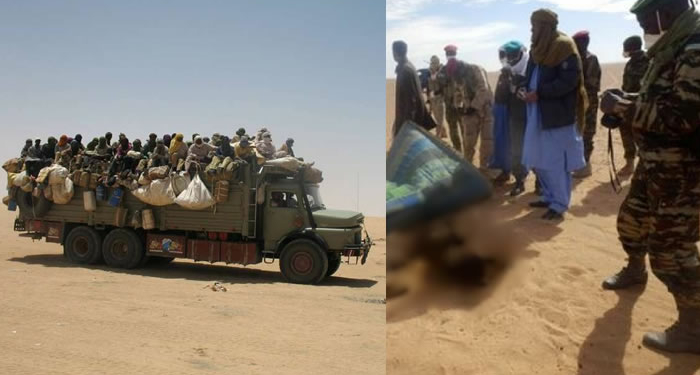No fewer than 44 migrants from Nigeria and Ghana have died in the Sahara Desert after their truck broke down in arid northern Niger.
The Red Cross said the migrants, most of whom have not been identified, died this week and according to Reuters, six survivors walked to a remote village where they said that 44 people, mostly from Ghana and Nigeria and including three babies and two other children, died of thirst, said Lawal Taher, the department head for the Red Cross in the Bilma region.
Taher said a search for the bodies was underway. The number of migrants who cross the Sahara has increased in recent years as impoverished West Africans risk their lives to try to reach Europe.
‘Extremely dry and difficult conditions’
Faced with tough conditions in their countries, many decide to leave. This has turned Niger’s desert north into a major transit area for migrants, according to the International Organization for Migration, and many human smugglers operate there.
Algeria and Libya are the final destinations for some travelers, while others seek to reach Europe, said Laura Lungarotti, migrant assistance regional specialist in the IOM’s west and central Africa office in Senegal. Most are from Niger, although others also come from central and western Africa.
Once they embark on their journeys, they face “extremely dry and difficult conditions,” she said. Those who get stranded in the desert face a challenge to survive.
Part of the problem is that many would-be migrants are stopped by Algerian or Libyan authorities and are expelled back over the border into Niger’s desert, Lungarotti said.
Some of those kicked out are transported directly to two transit centers run by the IOM — outposts in the desert where the migrants can receive food, water and first aid. Others manage to make their own way there.
Despite the dangers, the migrants’ numbers have been increasing since the beginning of this year, Lungarotti said.
Over the past 10 months, more than 15,000 from Niger and 1,300 from other countries have reached the two transit centers — one in Arlit, closer to Algeria, and the other in Dirkou, nearer to the Libyan border.
Some who’ve made their way back from Libya have told of being held in detention where they suffered harsh treatment, Lungarotti said.
Before Libya’s revolution overthrew the regime of strongman Moammar Gadhafi two years ago, many migrants from Niger worked in its construction and agricultural sectors. But the instability forced many out.
The recent conflict in northern Mali also sent about 60,000 refugees over the border into Niger, according to the European Community Humanitarian Office, adding to the pressure on its meager resources.




Discussion about this post